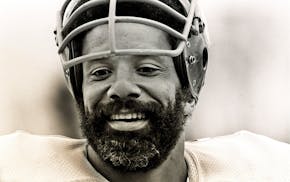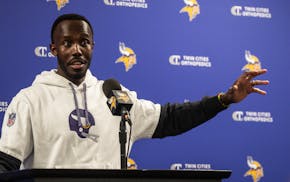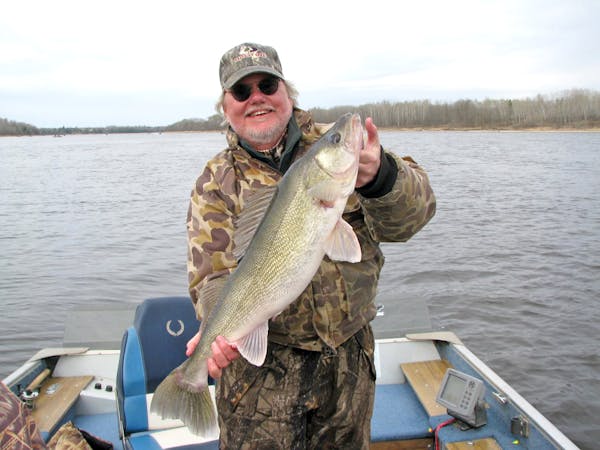Mariann Johnson's bike is more than 20 years old. Before COVID-19, it spent most of its life in her garage.
"It was uncomfortable," she said. The seat didn't feel right. She had sore wrists, her neck hurt and her shoulders ached after a short ride. In short, riding a bike hurt, so the bike sat in the garage. COVID brought it out again.
Johnson, of Minneapolis, wasn't alone in her renewed interest in bicycling. Data and anecdotes have shown the increase was worldwide, and caused painful shortages in bikes and gear throughout the industry. The question a year later is whether the bike boom of 2020 will continue. A big factor will be how comfortable riders like Johnson will be on a bicycle in a post-pandemic world.
Chris Balser, also known as the "Bicycle Fit Guru" among his followers in Minnesota, understands the importance of fitting the bike to the rider.
"Bicycling isn't a natural activity," he said, "but it doesn't have to be uncomfortable."
"Saddle height is important. If you're sitting on a bike and extend one leg, you should have a slight bend in the knee. Handlebar height is equally important. Getting the handlebars closer to the saddle and higher is best for beginners."
Balser recommends getting fit at a bike shop. "Get the least expensive fit. It doesn't have to be perfect, but it has to be done."
Johnson got an inexpensive fit in 2020. She'd still like to tweak her posture "so I can pedal into old age," but now that she's riding regularly, she has other questions and concerns that might resonate with any rider:
For someone who hasn't ridden my bike around the city much, what are some good safety tips for urban riders?
Minneapolis and St. Paul have invested in bike trails and bike lanes, some protected by permanent barriers, others striped. The network of lanes and trails isn't complete, so most cyclists will have to ride on city streets at some point. The good news is that both cities lowered the speed limit on residential streets to 20 mph, making them safer for bicyclists and pedestrians.
CJ Lindor, education coordinator for the Bicycle Alliance of Minnesota (BikeMN), likened bike riding in traffic to "driving" a bike. Lindor recommended following the same rules of the road as all other drivers, including using normal traffic lanes and avoiding riding on sidewalks or near the edge of a road, suggestions that can feel counterintuitive to beginning riders. Lindor is a certified cycling instructor who teach hands-on classes in safe cycling through the advocacy group.
What does good annual maintenance look like?
An annual checkup at a bike shop will catch most of the major maintenance issues. For day to daycare, Calvin Jones of Park Tool suggested focusing on a couple of key areas:
Tires: If the tires are getting flat on top, replace them soon. If the tire pressure has dropped a bit, find a DIY bike station at one of the trails and pump it up.
Chain: Grab the chain. If oily leave it alone, even if dirty. Apply chain lube, such as Park Tool's synthetic blend, if dry.
Brakes: Have a shop replace them if they are worn down.
Shifting: The adjustments are simple if a bike doesn't shift well. If you're mechanically inclined, check out "Calvin's Corner" online for more information, or take the bike to a shop.
How do I carry stuff on my bike?
"The most accessible bike bag," said Joe Mauntler of Sturdy Bag Designs in Richfield, "is the handlebar bag." It's a barrel-shaped bag, big enough for keys, wallet, phone and an extra layer of clothing for cool weather. For grocery shopping and commuting, he recommended panniers, those saddlebags that hang off a rack on the rear wheel. Another favorite is the "gas tank" bag, a small bag that sits on the horizontal top tube of the bike frame. It's ideal for small items like a phone, keys and wallet.
BikeMN has the most complete range of classes designed to help riders feel comfortable on the road, whether in a small town or in the urban core. Bike Basics courses include virtual classroom sessions on a wide range of topics including riding skills, handling traffic, basic maintenance, night riding and commuting.
Will the bike boom of 2020 continue into 2021 and beyond? For Johnson and others like her, getting answers and getting comfortable on the bike could make the difference between riding her bike and hanging it in the garage.
Writer Doug Shidell lives in Minneapolis. His novel, "On His Own Terms," is available as an e-book on Amazon and Barnes & Noble.

Souhan: Anxiety and depression in the NFL helped inspire Lindsey Young's children's book
A $2.8 billion settlement will change college sports forever. Here's how

Reusse: Country boy Jim Marshall never lost his lust for life

Twins open homestand with loss to Blue Jays, Jeffers ejected after critical call

